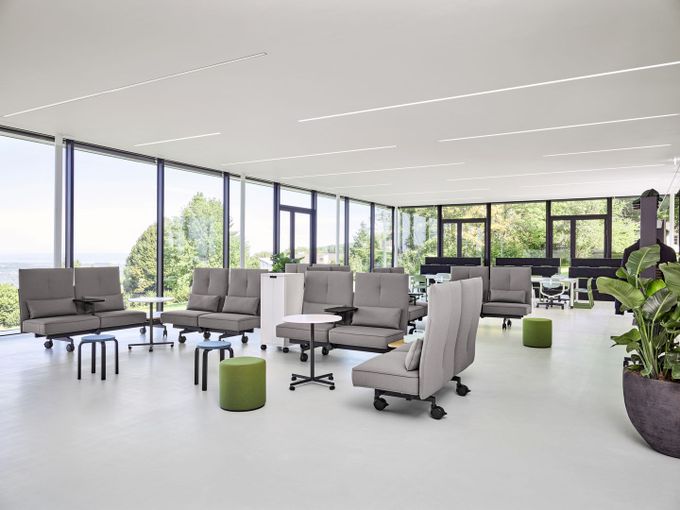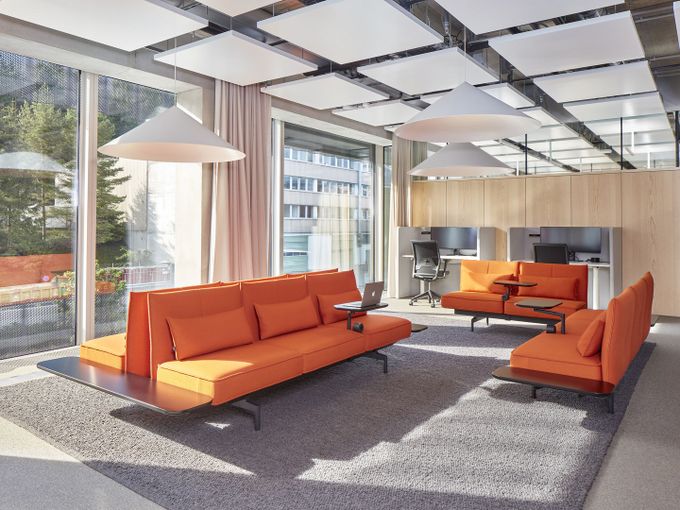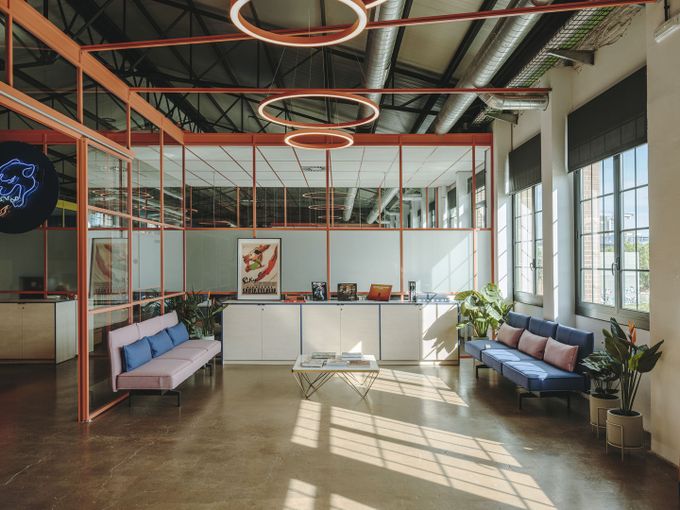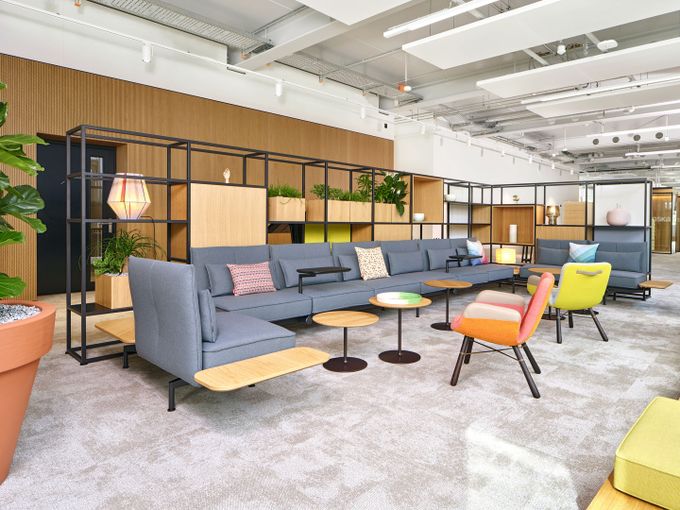ProductsChairsLounge chairsSofasOffice chairsChaises longuesStools & benchesSculpturesConference chairsAirport seatingStorage spaceMicro architectureDining tablesCafé tablesCoffee & side tablesDesksOffice furniture systemsConference systemsLightingClocksDecorative objectsCoat racks & wall shelvesTrays & vesselsAlexander Girard Antonio CitterioCharles & Ray Eames Barber OsgerbyGeorge NelsonHella JongeriusIsamu NoguchiJasper MorrisonJean ProuvéKonstantin GrcicRonan & Erwan BouroullecVerner PantonPanter&TourronCare & repairSpare partsCare productsManufacturer warrantyNewBestsellerQuickly availableGift finderOffice chair finderLounge chair finderColour & materialAnagram SofaVitra CushionsInspirationsLiving roomDining roomHome OfficeChildren's roomOutdoorHome StoriesAugmented RealityColours & materialsWorkspaceFocusMeetingWorkshopClub OfficeCitizen OfficeStudio OfficeDynamic SpacesHospitalityAirportsEducationCo-WorkingHealthcareOur ClientsA case for classicsOffice chairsDancing OfficeHome StoriesAugmented Reality - bring Vitra products into your homeA case for classicsColour & materialAn open house A leading space for a leading art collegeHigh comfort of low energyAn office landscape - without walls or partitionsServicesCare & repairSpare partsCare productsManufacturer warrantyFAQ and contactInstructionsInstructions for earlier productsConsulting & Planning StudioConsulting & planning in the VitraHausOutdoor care instructionsRepair, maintenance, overhaul at the Vitra Circle Store Campus ProfessionalsCAD dataProduct factsheetsCertificatesBrochuresSustainability reportInstructionsEcology informationpConPlanning examplesColour & Material LibraryCertificates and standardsTo the dealer loginOur ClientsAnagram SofaMikadoTyde 2 on castorsACXDancing OfficeOffice chairsMagazineStoriesConversationsExhibitionsDesignerProject VitraJust Do It!EVER GREENWhy the Eames La Fonda Chair was designedWhen a Sofa is more than just a Sofa: Anagram100% virgin wool – 100% recyclableAn archive is like a time capsuleVitraHaus Loft - A conversation with Sabine MarcelisWalking the talkA 1000 m2 piece of furnitureFrom a toy to an objectA studio visit with Tsuyoshi TaneThe Eames Collection at the Vitra Design MuseumAbout the partnership between Eames and VitraVitra CampusExhibitionsGuided tours & workshopsFood and drinkShoppingActivities for familiesArchitectureYour eventPlan your visitVitra Campus appCampus EventsNewsVitraHausVitra Design MuseumVitra SchaudepotVitra Circle Store CampusOudolf GartenAbout VitraSustainabilityJobs & CareersDesign processThe Original is by VitraHistory - Project Vitra
Soft Work
Edward Barber & Jay Osgerby, 2018
Never since the introduction of computers have office structures and work habits undergone such a radical transformation as that taking place today. Public spaces are becoming workspaces: thanks to communication technology, people can now work in hotel lobbies, cafés, airports or even parks. And in reverse, offices are becoming public spaces: many companies are now creating open and inspiring locations in which employees – or external visitors – can relax, hold meetings or spend the day working. As work is no longer tied to a specific location, new behavioural patterns have developed, which are gradually finding their way into the office. For example, the sofa has become a place on which to work – even though it is not necessarily suited to this task from an ergonomic viewpoint.
With this in mind, Vitra and the design duo Edward Barber and Jay Osgerby have devised and developed the new seating system Soft Work, uniting expertise from the home, office and public sectors. Instead of creating a working environment centred around desks with peripheral sofas, Soft Work has developed into a system in which table workstations are focused around a seating landscape. Barber and Osgerby see this as a long-term development: 'The workstation is going the same way as the dining room – it’s disappearing as an archetype. The desk has had its day. With mobile technology you need a place to sit occasionally, or a comfortable place to hang out. That’s our belief.'
Soft Work offers a versatile platform for both individuals and teams. Besides ergonomic seating options, users also find practical table surfaces, power outlets and charging stations. Mobile tables and chairs can be pulled up as needed and put away again, and the addition of panels creates spaces for quiet, concentrated work. Thanks to its modular concept, Soft Work can be easily assembled into diverse arrangements, enabling architects to structure the internal spaces of a building, create specific focal points, or define flexible public areas.
Soft Work offers a versatile platform for both individuals and teams. Besides ergonomic seating options, users also find practical table surfaces, power outlets and charging stations. Mobile tables and chairs can be pulled up as needed and put away again, and the addition of panels creates spaces for quiet, concentrated work. Thanks to its modular concept, Soft Work can be easily assembled into diverse arrangements, enabling architects to structure the internal spaces of a building, create specific focal points, or define flexible public areas.
All these options are possible due to the sophisticated construction of Soft Work and its technical details: the arm-mounted desks are movable and enable diverse seating and working positions; the power sockets are located between the seat cushions and can simply be pivoted upwards for comfortable use; partition screens can be used to divide up zones and create quiet sheltered spaces. All of the functional elements are seamlessly and elegantly integrated into the appealing overall aesthetic. Equipped with generously padded seat cushions and flexible backrests, the sofa offers comfortable working conditions, even over longer periods of time.
Straight and curved elements in single or double versions, platforms, tables, panels, arm-mounted trays, power and data connections, optional castors for greater agility, along with a choice of covers in a wide range of colours, offer countless possibilities for customised configurations of Soft Work that suit individual needs and spaces – whether in offices, coworking centres, universities, station halls, airport terminals or restaurants.
Soft Work is available on castors for even greater flexibility, transforming the sofas into central adaptable elements within agile office environments. The seating arrangements can be spontaneously reconfigured to suit the workplace dynamics or the project at hand – and should additional space be needed, the sofas can be easily pushed to one side.
Interview with the international boarding school Institut auf dem Rosenberg in St. Gallen, Switzerland, on the use of Soft Work on castors for an agile learning environment.
We are here to assist you.
If you would like to start a conversation with us, or to get additional information about products or implications on spaces, we invite you to get in touch with us.
Information
Plano
More colorsLaser RE
More colorsVolo
More colorsCosy 2
More colorsCredo
More colorsTrack
More colorsLeather Premium F
More colorsThis product was designed by
Edward Barber & Jay Osgerby
Edward Barber and Jay Osgerby studied architecture as fellow students at the Royal College of Art in London. Since that time, their collaborative work has probed the interface between industrial design, furniture design and architecture.




